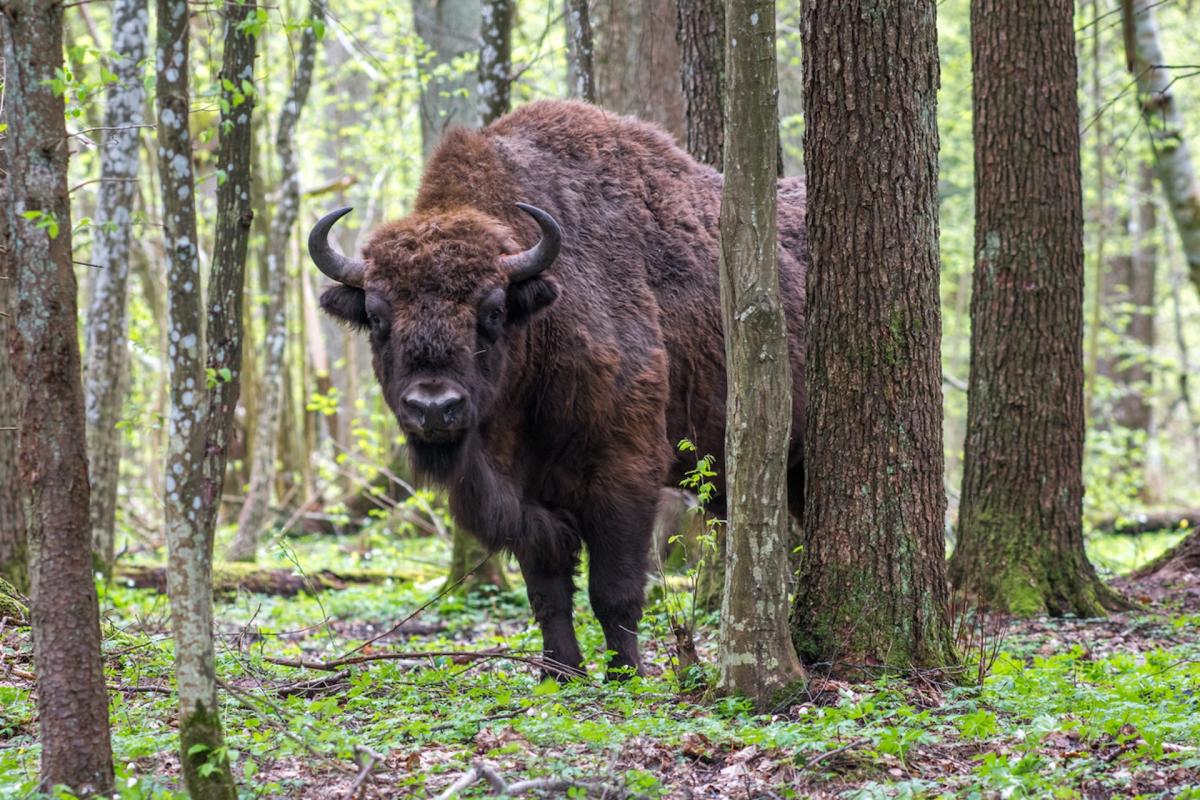
Non-profit conservationist group Rewilding Europe has announced the release of eight European bison at the Herdade do Vale Feitoso Estate in the Castelo Branco District of eastern Portugal.
The Polish State Forest, European Friends Society, and the European Bison Conservation Center translocated the herd from reserves throughout Poland. According to the Good News Network, the hope is that the bison will help prevent wildfires and invasive species spread while fostering biodiversity across the 7,600-hectare area.
The large grazers reduce the risk of wildfires by consuming flammable vegetation, creating natural firebreaks, and clearing forested areas to allow more light, which, in turn, leads to the growth of grass instead of scrubs.
It’s a crucial factor, considering the extreme temperatures that have led to devastating wildfires in the country.
Bison also can support Portugal’s diverse landscape of forests, scrubs, grasslands, and other micro-habitats through their grazing, foraging, trampling, and fertilizing. Studies have shown that the herbivores can promote and protect biodiversity and even enhance carbon sequestration in vegetation and soil through these behaviors, making them a keystone species crucial to the climate and ecosystem.
These bison are the first of their kind to live in the Iberian Peninsula since the now-extinct steppe bison roamed the region thousands of years ago during the last ice age. While they aren’t native to Portugal, research has found that European bison introduced to southern Spain have acclimated to the hot and dry conditions of the Mediterranean.
Watch now: Ecologist cries tears of joy after badly injured bald eagle is released following rehabilitation
That makes the rewilding project mutually beneficial — similar to the giant anteater in Brazil and the white rhino in South Africa — as the creature is listed as near threatened by the IUCN’s Red List but has experienced a revival. The European bison population has spiked from 2,500 to 9,000 over the last decade, thanks in part to Rewilding Europe’s efforts in Romania, Bulgaria, Germany, and Poland.
Tour groups can view the bison once they have adjusted to their new habitat, adding ecotourism as another positive dimension to their translocation.
“We are viewing this translocation as a pilot,” Rewilding Portugal team leader Pedro Prata said in a statement. “The bison will be closely monitored to see how they acclimatise to the local landscape and climate. This is the first time that Rewilding Portugal team have managed bison, so it’s a learning process for us too. Members of the team will receive training in bison management.”
Join our free newsletter for cool news and cool tips that make it easy to help yourself while helping the planet.
EMEA Tribune is not involved in this news article, it is taken from our partners and or from the News Agencies. Copyright and Credit go to the News Agencies, email news@emeatribune.com Follow our WhatsApp verified Channel





